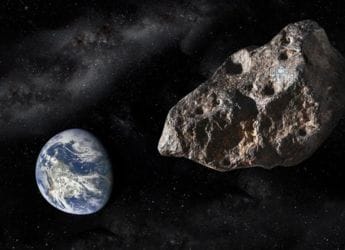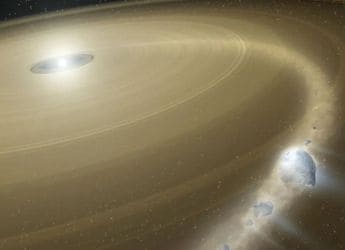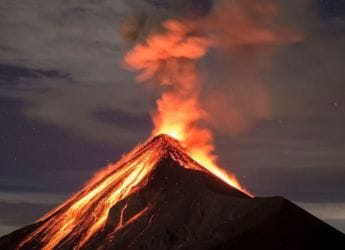- Home
- Science
- Science News
- Hubble Spots White Dwarf Devouring Icy Pluto Like Planet 260 Light Years Away
Hubble Spots White Dwarf Devouring Icy Pluto-Like Planet 260 Light-Years Away
Hubble observations show a white dwarf star shredding and accreting a volatile-rich, Pluto-like body 260 light-years away. The discovery suggests icy worlds can survive stellar death and hints at our own solar system’s far future.

Photo Credit: NASA/JPL-Caltech
Hubble spots white dwarf devouring a Pluto-like planet 260 light-years away
Observing a cosmic cataclysm with the Hubble Space Telescope, a team of astronomers has found a white dwarf, the compact remains of a star the size of the Sun, eating the icy cores of a Pluto-like planet some 260 light-years distant. This piece is made of volatile materials, and thus, not only does it help us understand how planetary bodies in older star systems might be, but it also presents an interesting view of how our own solar system will be in a billion years.
The Discovery and Evidence
According to the paper, a team of researchers led by Snehalata Sahu of the University of Warwick used Hubble's Cosmic Origins Spectrograph to detect volatile elements, including carbon, sulphur, nitrogen, and a high oxygen content, falling onto the white dwarf. These chemical fingerprints reveal that the consumed object was rich in ices: about 64% water ice, along with nitrogen ices reminiscent of those found on Pluto. The material likely came from a large icy planetesimal in the system's Kuiper Belt analogue, pulled inward and torn apart by the white dwarf's intense gravity.
What it tells us
This observation has some important implications. It indicates that volatile-rich bodies may survive till late stellar evolution stages, unlike the expectation that they are normally expelled at early stages. Also, the event provides a glimpse into the distant future of our Sun: the Sun will become a white dwarf and will likewise be able to accrete icy debris in the far-off corners of the solar system. Future observations with a telescope such as the James Webb Space Telescope will seek further to investigate the molecular characteristics such as water vapor and carbonates to comprehend these dramatic endings better.
For the latest tech news and reviews, follow Gadgets 360 on X, Facebook, WhatsApp, Threads and Google News. For the latest videos on gadgets and tech, subscribe to our YouTube channel. If you want to know everything about top influencers, follow our in-house Who'sThat360 on Instagram and YouTube.
Related Stories
- Samsung Galaxy Unpacked 2025
- ChatGPT
- Redmi Note 14 Pro+
- iPhone 16
- Apple Vision Pro
- Oneplus 12
- OnePlus Nord CE 3 Lite 5G
- iPhone 13
- Xiaomi 14 Pro
- Oppo Find N3
- Tecno Spark Go (2023)
- Realme V30
- Best Phones Under 25000
- Samsung Galaxy S24 Series
- Cryptocurrency
- iQoo 12
- Samsung Galaxy S24 Ultra
- Giottus
- Samsung Galaxy Z Flip 5
- Apple 'Scary Fast'
- Housefull 5
- GoPro Hero 12 Black Review
- Invincible Season 2
- JioGlass
- HD Ready TV
- Laptop Under 50000
- Smartwatch Under 10000
- Latest Mobile Phones
- Compare Phones
- Xiaomi 15T Pro
- Xiaomi 15T
- OPPO A6 Pro 4G
- Vivo V60 Lite 5G
- Samsung Galaxy A17 4G
- Redmi 15C 5G
- Oppo K13s
- Redmi 15R 5G
- HP OmniBook X Flip 14 (B91BSPA)
- Acer Nitro V 16S (2025)
- Redmi Pad 2 Pro 5G
- Redmi Pad 2 Pro
- Garmin Instinct Crossover AMOLED
- Garmin Venu 4
- Elista QLED Google TV
- TCL C72K QD Mini‑LED TV
- Asus ROG Ally
- Nintendo Switch Lite
- Haier 1.6 Ton 5 Star Inverter Split AC (HSU19G-MZAID5BN-INV)
- Haier 1.6 Ton 5 Star Inverter Split AC (HSU19G-MZAIM5BN-INV)

















